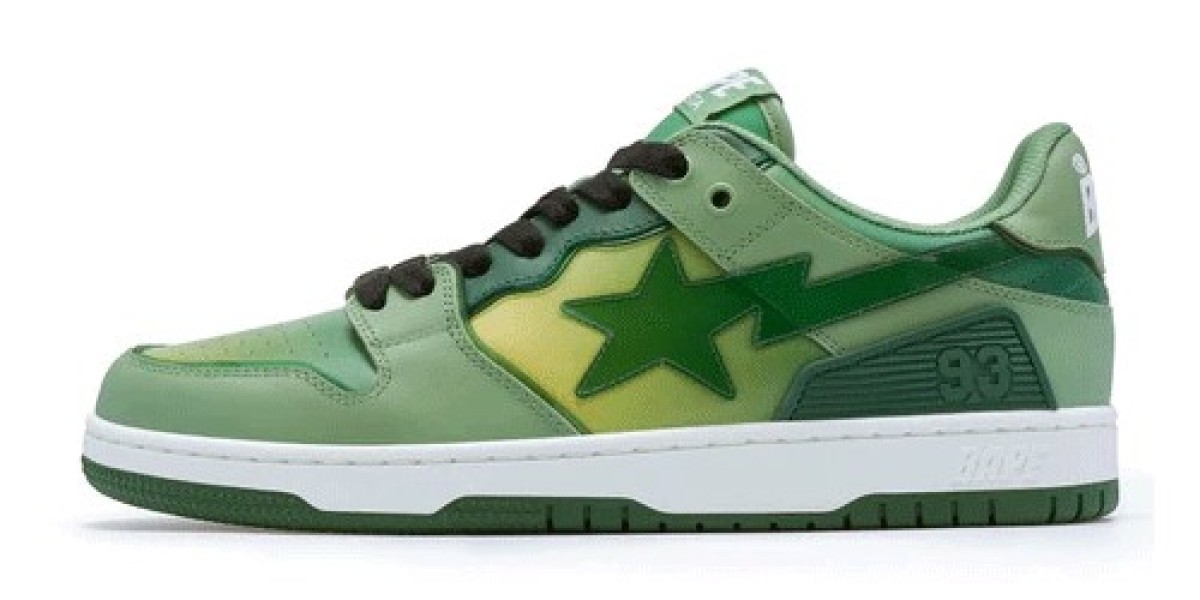In the ever-evolving world of streetwear, few sneakers command the level of respect and nostalgia as the Bapesta. Born from the creative depths of Japanese fashion brand A Bathing Ape (BAPE), the Bapesta has transcended trends and become a staple in global sneaker culture. Whether you’re a seasoned collector or new to the streetwear scene, understanding the history, design, and impact of the Bapesta is crucial.
The Origins of Bapesta: A Sneaker Born in Harajuku
The Bapesta first hit the streets in the early 2000s, conceptualized by Nigo, the founder of BAPE. At the time, streetwear was still carving out its space in the high-fashion conversation. Nigo, deeply inspired by American hip-hop, pop culture, and 1980s sportswear, sought to fuse Japanese design sensibility with global street aesthetics.
Drawing clear inspiration from Nike’s Air Force 1 silhouette, the Bapesta featured a familiar low-top shape, chunky sole, and leather upper. What set it apart, however, was its bold and unapologetic branding. Instead of Nike’s swoosh, Bapesta showcased a shooting star motif (known as the "sta") on the side panel, a visual cue that came to define the line.
In its early years, the Bapesta became a cult phenomenon in Tokyo’s Harajuku district, where youth culture and fashion experimentation were already thriving. Its bright colorways, patent leather finishes, and limited-edition releases made it an instant hit.
Cultural Crossroads: Bapesta and the Hip-Hop World
One of the key accelerators of Bapesta’s popularity was its rapid adoption by American hip-hop artists. During the early 2000s, stars like Pharrell Williams, Kanye West, and Lil Wayne were spotted wearing Bapestas regularly. This wasn’t just product placement — it was the beginning of a cultural exchange between Tokyo and the West that shaped modern streetwear.
Pharrell in particular played a pivotal role. His collaboration with Nigo on brands like Billionaire Boys Club and Ice Cream extended BAPE’s influence far beyond Japan. When Kanye West released his own limited-edition Bapesta in 2007 — complete with artwork from his Graduation album — it cemented the sneaker's status as more than just footwear. It became a canvas for artistic expression.
Design Language: What Makes a Bapesta Stand Out
What draws sneakerheads to the Bapesta isn’t just its legacy, but also its design ethos. The shoe’s construction is intentionally flashy. Patent leather materials reflect light in a way few other sneakers do. Color blocking is aggressive and unconventional, often featuring neons, pastels, or metallics. BAPE’s signature camouflage often finds its way onto special editions, as do playful graphics like shark teeth or ape heads.
This maximalist approach was a deliberate departure from the more muted tones of mainstream sneakers. It offered a louder, more individualistic option for those looking to stand out. Over the years, BAPE has released countless iterations of the Bapesta — from subtle monochrome editions to ultra-rare artist collabs — ensuring the model never feels stale.
Limited Drops and Sneaker Hype: The Resale Market Factor
Like many grail-level sneakers, the value of a Bapesta often extends beyond retail. Limited runs and exclusive drops have made many Bapesta colorways highly sought after in the resale market. Rare pairs, especially collaborations or region-specific releases, can fetch thousands of dollars.
Resale platforms have only amplified the hype. For today’s sneaker enthusiasts, owning a pair of Bapestas is both a style statement and an investment. The hunt for vintage pairs from the early 2000s is particularly fierce. These original releases represent a golden era for streetwear — before mass production diluted the exclusivity of drops.
The Bapesta Comeback: Reinvention in the Modern Era
While BAPE saw a dip in influence during the 2010s, recent years have seen a strong resurgence. As Y2K aesthetics and retro fashion styles return to the mainstream, so too has the Bapesta. BAPE has leaned into its heritage, re-releasing classic silhouettes while also introducing new variations like the Skullsta and Court Sta, expanding their sneaker portfolio.
Collaborations have also returned in full force. Partnerships with brands like Reebok, Coach, and even Marvel have helped reintroduce Bapesta to younger audiences who may have missed its original heyday. The modern Bapesta isn’t just about nostalgia — it’s about reinvention.
Bapesta vs Air Force 1: Homage or Copy?
No discussion about Bapesta is complete without addressing the obvious — its similarity to Nike’s Air Force 1. Some see it as homage; others call it imitation. The legal gray area surrounding the Bapesta’s design has long been debated. However, within streetwear culture, copying is often recontextualized as reinterpretation.
In Japan, remixing Western styles with a unique local twist has always been part of the fashion conversation. Nigo’s take on the Air Force 1 wasn't about ripping off Nike — it was about bringing a distinctly Japanese voice to a global silhouette. Over time, this reinterpretation became iconic in its own right.
Today, Nike has taken clearer steps to protect its intellectual property, and newer Bapesta designs now sport more distinct updates to avoid direct comparisons. But for many fans, it’s precisely this rebellious origin story that makes the Bapesta so compelling.
Styling the Bapesta: Fashion Tips for the Streetwear Enthusiast
Owning a pair of Bapestas is only half the equation. Styling them effectively is what turns heads. Because of their bold design, Bapestas pair well with neutral streetwear basics — oversized hoodies, wide-leg cargo pants, and simple graphic tees. Let the shoes do the talking.
For those looking to go full streetwear, leaning into BAPE’s wider clothing line helps build a cohesive outfit. Camo hoodies, shark zip-ups, and layered pieces with branded details all create a unified look that channels Harajuku meets NYC.
On the other hand, if subtlety is your thing, pairing a toned-down Bapesta colorway with minimalist fashion can add just enough edge without overpowering your look.
Bapesta in Pop Culture: More Than Just a Sneaker
Over two decades, the Bapesta has embedded itself in music videos, album covers, and even animated series. It has become more than a sneaker — it’s a pop culture icon. References to BAPE and Bapesta can be found in lyrics, fashion editorials, and digital art.
As streetwear continues to influence mainstream luxury fashion, the Bapesta's role as a cultural bridge becomes even more significant. It represents a moment in time when youth culture, creativity, and rebellion converged into something timeless.
Why Bapesta Still Matters Today
In a sneaker world crowded with drops, hype, and collaborations, it’s rare for a model to stay relevant for over 20 years. Yet the Bapesta continues to evolve, adapt, and inspire. Its legacy is not just rooted in nostalgia but in its ability to remain fresh through innovation and cultural alignment.
For anyone serious about sneakers or streetwear, the Bapesta is more than a collector’s item. It’s a symbol — of influence, individuality, and international fashion dialogue.
Conclusion
From the streets of Harajuku to the stages of global rap stars, the Bapesta has journeyed far beyond its early roots. As it reemerges in today’s trend cycle, it reminds us why certain designs never go out of style. They don’t just fit in — they define what it means to stand out.








